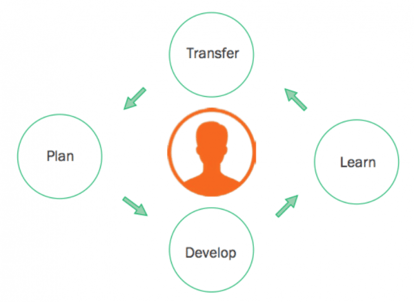
B2B Articles - January 29, 2016

Maybe you see yourself as a modern day Tevye embracing “tradition” as enthusiastically as he does to begin Fiddler on the Roof. Yet, a thoughtful comparison of traditional web design to growth driven design may be compelling enough to have you change your tune.
Before you take the mic to persuade your colleagues to try this new web development approach, you’ll need to be able to answer the first question: What is Growth Driven Design?
Growth Driven Design (GDD) is agile development or redesign of a website in intentional increments. Making continuous, adaptations based on data, this is not laboring to make every element of your site perfect before leaving it to sit static online for a few years.
Instead, you minimize risk by focusing on a data- and audience-analysis driven site launch or re-design intending to make changes based on your ongoing analysis of visitors’ needs and your lead conversions.
GDD’s two major phases of development
The fundamental principle of Growth Driven Design is continuously experimenting, learning (from analysis) and improving your website. In designing the content and messaging, consider site usefulness, user experience, conversion rate optimization, stickiness and how to best tailor the site to the targeted persona.
Once you have the information architecture in place, you’ll move into wireframing and design, then program and development. Yet the need to continue testing for user experience and your goal achievement remains. After all, GDD is closely related to lean marketing principles and shares the “learn quickly what works and discard what doesn’t” mentality.
Essentially, GDD is non-linear. You start out with planning and developing, then quickly move into a stage where you are analyzing data to inform your continuous learning. A final key aspect is transferring that learning to other departments (and listening to them) to better apply the lessons gained from the GDD experience for users and your internal teams.
Still wondering why it’s called Growth Driven Design? That’s because at the pinnacle of the website hierarchy of needs is Growth. Having taken the time to develop a sound foundation and get the most value out of an optimized, predictable site, it’s time to grow!

Related reading:

Tel 212-993-7809
Ironpaper ®
10 East 33rd Street
6th Floor
New York, NY 10016
Map
New York Agency
B2B marketing
B2B Content
Demand generation agency
Digital Marketing
Account-Based Marketing
ABM for SaaS
ABM for energy
Demand generation campaigns
Industry marketing
Privacy Policy
First-party data marketing
SaaS marketing
SEO for B2B
IoT Marketing
B2B Marketing for IoT Companies
HubSpot Agency
B2B Product Marketing
B2B Software Marketing
IoT go-to-market strategy
IT Marketing
HubSpot for ABM
ABM for AI companies
Technology Marketing
Marketing for IT Companies
ABM Campaigns
B2B lead generation
B2B Marketing and Growth Agency.
Grow your B2B business boldly. Ironpaper is a B2B marketing agency. We build growth engines for marketing and sales success. We drive demand generation campaigns, ABM programs, B2B content, sales enablement, qualified leads, and B2B marketing efforts.